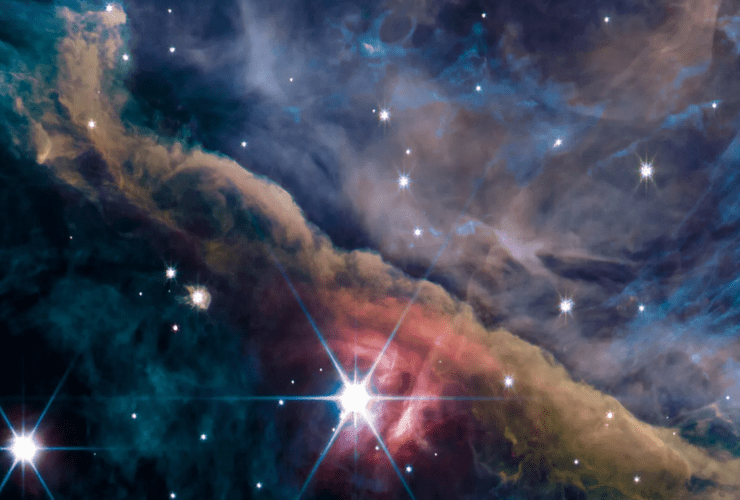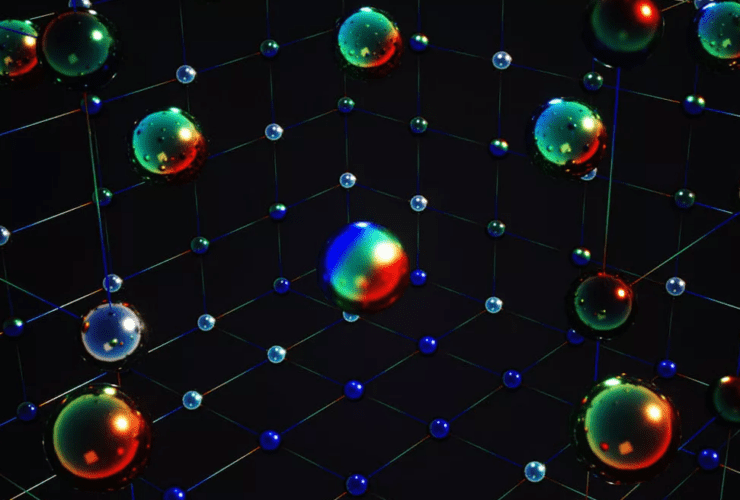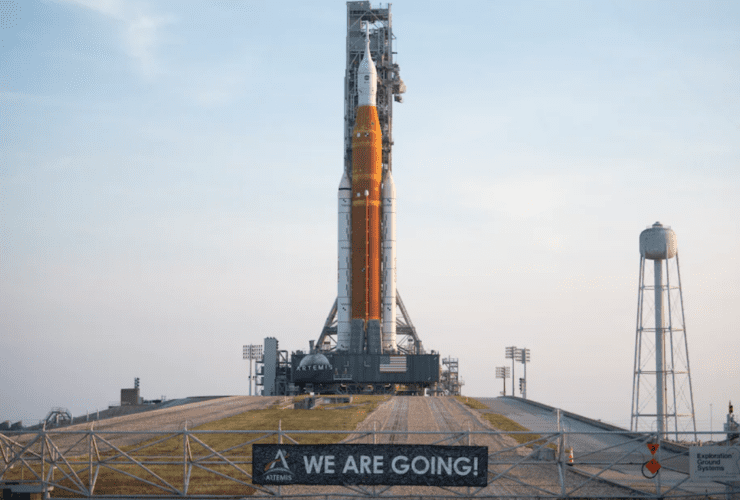The James Webb Space Telescope (JWST) has discovered newborn stars within the Orion Nebula, which look genuinely incredible! Even with the unaided eye, the Orion Nebula is one of the brightest star-forming areas visible in the night sky, so seeing ...
According to a recent survey of exoplanets around red dwarf stars, there’s a rise in the population of water worlds. Apparently, we may have underestimated how much wetter the Milky Way galaxy is. What’s more curious is that the newly ...
Ingenuity strikes again with its 31st flight on Mars! This time, NASA’s helicopter takes a chance to explore some ancient Martian ground. The Perseverance rover, the little helicopter’s companion, has been investigating the remains of a long-dry river delta for ...
Chinese scientists have found a brand-new mineral called Changesite-(Y) in lunar samples returned by China’s Chang’e-5 lunar spacecraft in December 2020. The mineral resembles a diamond a lot due to its crystal clear appearance. China is, at present, the third ...
To make matter even colder than the darkest parts of space, a team of researchers has managed to chill it to within a billionth of a degree of absolute zero. The experiment, run at the University of Kyoto in Japan, ...
NASA plans to dress its astronauts in style for the Artemis III mission! As fancy as that sounds, there’s more than meets the eye. The ambitious fashion project will cost the space agency $228.5 million for some Moonwalking spacesuits that ...
NASA’s James Webb Space Telescope has captured a spooky giant space tarantula, where the biggest and hottest stars live. The Tarantula Nebula, aka 30 Doradus, is actually known as the ‘brightest star-forming place in the galaxies nearest our galaxy,’ according ...
New hints revealed by the European Space Agency (ESA) testify to the Red Planet’s once-watery history. The findings are genuinely intriguing. The option with the biggest promise is still Mars, our next-door cosmic neighbor, even if the quest for life ...
Diamond rain may be falling from giant ice planets, and scientists believe that the generation of nanodiamonds on Earth might increase. Recent research on our planet shows an abundance of diamonds showering down on frigid planets like Uranus and Neptune. ...
James Webb Space Telescope captures the first direct image of an extraterrestrial world, and by the looks of it, we sure have a lot to explore. The space telescope’s success is once again proved by new data showcasing more puzzle ...
Curious about the Moon’s dark side? Well, you might be surprised to find out that our lunar neighbor has only shadows. And it gets better! There are some ‘pockets’ on the Moon’s polar region that are never touched by any ...
The greatest contender so far for a watery, Earth-like exoplanet is a world about 100 light-years away. Dimensional and mass data for this object, designated TOI-1452b, are compatible with a density profile that would support the presence of a worldwide ...
We couldn’t believe our eyes ever since the initial James Webb Space Telescope photos were made public in July. JWST offers so much, from the clear views of Jupiter to the most distant star yet discovered! But Webb has now ...
A new map that took years to create shows us where on Mars we can locate evidence of water that existed in the past. Researchers from the European Space Agency (ESA) and the United States Agency for Space Exploration (NASA), ...
Did you know that no one can hear you scream in space since sound waves can’t pass through the vacuum that fills most of the cosmos? Well, as curious as that could be, there’s more of it. According to NASA, ...
Extraordinary images of Jupiter have been made possible by the world’s biggest and most space telescope: the James Webb Space Telescope! Back in July, JWST captured pictures of the giant planet in the solar system. Now, we get the chance ...
NASA has yet to send the rocket that will transport men to the moon and the crew to explore the lunar surface. That’s going to be part of the Artemis mission. It has already determined where the astronauts would land ...
Following a significant solar outburst, NASA astronaut Bob Hines captured an aurora on video from the International Space Station on August 17. According to SpaceWeather.com, the northern lights emerged when the Sun flung enough charged particles towards our planet to ...
With the first records from the James Webb Space Telescope (JWST), a group of academics recently filed a study to MNRAS in which they report the discovery of a candidate galaxy named CEERS-93316 that formed roughly 250 million years after ...
How conducive is the Moon to the survival of humans? It seems that our odds have just improved. A recent study has shown that there are regions on the moon where temperatures are consistent enough for human beings to exist. ...
In recent images taken by the James Webb Space Telescope, astronomers discovered an unusual occurrence taking place in a far-off galaxy. This event was not present in the same galaxy when the Hubble Space Telescope was previously used to observe it. ...
The Institute for Advanced Concepts at NASA is well-known for its promotion of far-fetched theories and proposals in the domains of astronomy and space exploration. The institution has been supporting a broad range of initiatives since its re-founding in 2011. ...
China’s National Space Administration (CNSA) reported on June 29 that the Tianwen-1 space probe has skilfully obtained photographs of the whole Red Planet over a year of exploration. “Quest for Heavenly Truth” Tianwen-1 is composed of six different spacecraft: an ...
The possibility of a planet-killing asteroid appearing out of nowhere, as shown in current media, is slim. Even smaller ones that might merely destroy a city or part of a continent attract enough attention to determine whether they’re a danger. ...
We can simulate the Solar System’s planet movements quite precisely using Newton’s rules of physics. Disc galaxies, on the other hand, were found in the early 1970s to defy Newton’s theory, with stars at their outer borders moving far faster ...





























